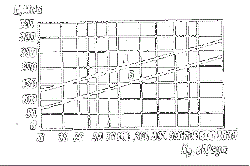
Заглавная страница Избранные статьи Случайная статья Познавательные статьи Новые добавления Обратная связь FAQ Написать работу КАТЕГОРИИ: ТОП 10 на сайте Приготовление дезинфицирующих растворов различной концентрацииТехника нижней прямой подачи мяча. Франко-прусская война (причины и последствия) Организация работы процедурного кабинета Смысловое и механическое запоминание, их место и роль в усвоении знаний Коммуникативные барьеры и пути их преодоления Обработка изделий медицинского назначения многократного применения Образцы текста публицистического стиля Четыре типа изменения баланса Задачи с ответами для Всероссийской олимпиады по праву 
Мы поможем в написании ваших работ! ЗНАЕТЕ ЛИ ВЫ?
Влияние общества на человека
Приготовление дезинфицирующих растворов различной концентрации Практические работы по географии для 6 класса Организация работы процедурного кабинета Изменения в неживой природе осенью Уборка процедурного кабинета Сольфеджио. Все правила по сольфеджио Балочные системы. Определение реакций опор и моментов защемления |
Multimedia Messaging ServiceСодержание книги Поиск на нашем сайте
Acronym: MMS UID: 1818 Main responsibility: T2
References for WI " Multimedia Messaging Service "
The Multimedia Messaging Service (MMS) was first introduced in Release 99. It allows users to send and receive messages exploiting a large array of media types e.g. text of almost unlimited length, images, audio and video clips, while also making it possible to support new content types as they become popular. Multiple media elements can be combined into a composite single message. Messages can be sent either to a mobile phone or to an e-mail address.
The main network element of the Multimedia Message Service Environment (MMSE) is the MMS Relay/Server which is responsible for storage and handling of incoming and outgoing messages and for the transfer of messages between different messaging systems. Beside these tasks, the MMS Relay/Server has many other tasks which are described in TS 23.140. Other involved MMS elements are the MMS User Agent and MMS User databases. The functional descriptions of the involved MMS elements are provided in TS 23.140 and for implementation of the MMS User Agent – MMS Relay/Server interface a reference to the WAP Implementation of MMS is given. Whereas the Release 99 specifications only included the concept with some little technical details, the Release 4 document was enhanced significantly.
The figure below shows the MMS reference architecture and identifies the reference points.
MMS reference architecture The main improvement of MMS in Release 4 is the full definition of an operable MMS, including the MMS Service Behaviour Description, the Reference Architecture as shown above, the MMS framework, the application protocol framework and service primitives, and the Technical realisation of MMS, including the handling of MMS-related information on the USIM. To enable interoperability of MMS between terminals and MMS network equipment of different manufacturers, the definition of a minimum set of mandatory media formats for the MMS User Agent was introduced. It included AMR for media type Audio, and Baseline JPEG for media type Image. The optional support of several more codecs is specified. The support of the following aspects were added:
The other aspects of Release 4 MMS are:
MExE enhancements Rel-4
Acronym: MExE UID: 1445 Main responsibility: T2
References for WI " MExE enhancements Rel-4 "
The work item MExE enhancements Rel-4 consists of two aspects: · MExE Rel-4 Improvements and Investigations: several enhancements are introduced in Release 4 of which the most significant ones are mentioned in the MExE description below
MExE is a feature introduced in GSM Release 98, enhanced in GSM Release 99 to cover SIM MExE certificate management, security clarifications and QoS aspects. Release 4 introduces further enhancements of which the most significant is the introduction of a new small footprint Java classmark (Classmark 3).
MExE provides a standardised execution environment in an MS, and an ability to negotiate its supported capabilities with a MExE service provider, allowing applications to be developed independently of any MS platform. The MS can then be targeted at a range of implementations for MExE from small devices with low bandwidth, limited displays, low processor speeds, limited memory and MMI to sophisticated devices with a complete MExE execution environment.
A standardised means of negotiating the MSs’ and network’s capabilities is supported. This negotiation permits the mutual exchange of capabilities between the MS and the MExE server, and possibly includes the service profile of the user and capabilities of the network.
A network can be a transport bearer for the negotiation, interaction and transferring of applications, applets and content with the MS. It does not have to be the provider of the MExE services with which the MS’s execution environment is interacting with. The network may also be the intermediary between two MSs which are engaged in a MExE service with each other, with the network effectively supplying the “pipe” and not playing a MExE role in the connection. Network nodes, nodes external to the network, or even MSs are the entities which can interact with the MSs’ execution environment.
Central elements of the MExE specification are the classmark concept, content negotiation and the security architecture which are explained below.
The MExE classmark provides the device’s capabilities. The following classmarks are defined in Release 4 (in Rel-4 MExE classmark 3 was added):
· MExE classmark 1 - based on Wireless Application Protocol (WAP) - requires limited input and output facilities (e.g. as simple as a 3 lines by 15 characters display and a numeric keypad) on the client side, and is designed to provide quick and cheap information access even over narrow and slow data connections. · MExE classmark 2 - based on Personal-Java - provides and utilises a run-time system requiring more processing, storage, display and network resources, but supports more powerful applications and more flexible MMIs. MExE Classmark 2 also includes support for MExE classmark 1 applications (via the WML browser.)
Content negotiation allows for flexible choice of formats available from a server or adaptation of a service to the actual classmark of a specific client device. Bi-directional capability negotiation between the MExE Service Environment and MExE device (including MExE classmark), supports the transfer of capabilities between the client and the server.
In order to manage the MExE and prevent attack from unfriendly sources or transferred applications unintentionally damaging the MExE device a security architecture is specified. The basis of MExE security is: · a framework of permissions which defines the permissions transferred MExE executables have within the MExE MS; · the secure storage of these permissions and permission types; · conditions within the execution environment that ensure that MExE executables can only perform actions for which they have permission.
The MExE permissions framework is as follows (there is no implied hierarchy): · MExE Security Operator Domain (MExE executables authorised by the HPLMN operator); · MExE Security Manufacturer Domain (MExE executables authorised by the terminal manufacturer); · MExE Security Third Party Domain (trusted MExE executables authorised by trusted third parties); · Support for the three domains is mandatory; Untrusted MExE executables are not in a specific domain, and have very reduced privileges.
In Release 4 several enhancements to the security framework have been introduced in particular enhancements related to the new MExE classmark 3 based on J2ME CLDC and MIDP.
Another enhancement in Release 4 is the optional support of core software download. Core software download enables the UE radio, characteristics and properties to be updated by changing the software in the UE. E.g. a new codec may be loaded into a device, a new air interface, etc. Guidelines are introduced into the specification but the functionality is not specified in detail. 5.3 Advanced Speech Call Items enhancements_REL-4
Acronym: ASCI UID: 2230 Main responsibility: CN1
References for WI " Advanced Speech Call Items enhancements_REL-4 "
This work item was introduced manly for maintenance of the ASCI feature. ASCI refers to the use of GSM for Railways (GSM-R). The Release 4 enhancements cover ASCI’s High Speed Train Interoperability, as requested by the TSI (Technical Standards for Interoperability). The enhancements are the possibility to add operator-to-dispatcher information, the definition of ASCI related event records, and the introduction of ciphering for Voice Group Call Service (VGCS)/Voice Broadcast Service (VBS).
|
|||||||||||||||||||||||||||||||||||||||||
|
Последнее изменение этой страницы: 2016-04-19; просмотров: 338; Нарушение авторского права страницы; Мы поможем в написании вашей работы! infopedia.su Все материалы представленные на сайте исключительно с целью ознакомления читателями и не преследуют коммерческих целей или нарушение авторских прав. Обратная связь - 216.73.216.33 (0.009 с.) |





